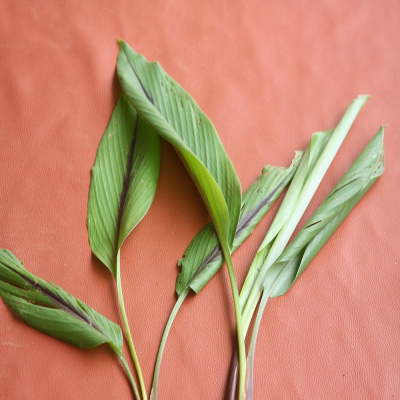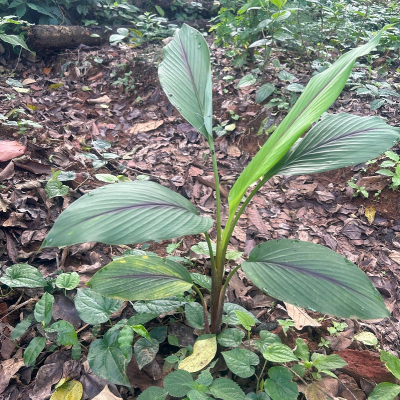Distribution and habitat: Bengal
Botany: Plant with a height about 1.2 m.
- Leaves: 30-60 x 12.5-1.5 cm broadly lanceolate or oblong, glabrous, with a deep ferruginous purple cloud down the middle which penetrates to the lower surface. Petiole and sheath about as long as the blade.
- Inflorescence: Spikes appearing rather before the leaves, about 15 cm long or altogether about 30 cm high with the peduncle. Flowering bracts green with a ferruginous tinge. Coma deep bright red, tending to crimson. Flowers pale yellow, reddish at the outer border, rather shorter than their bracts.
Properties: Aromatic, stimulant, carminative
Uses: Used externally for sprains and bruises. The ‘Turkomans’ employ these tubers as a rabifacient, to rub their bodies after Turkish bath. The tubers are also rich in starch. Dry rhizomes rubbed with little water and extract prepared is taken internally to relieve asthma. The rhizome contains essential oil containing d- camphor. The plant is being used by the tribals in West Bengal, Madhya Pradesh, Orissa, Biharand and Uttar Pradesh as a medicine and cosmetic. In West Bengal it is used as a substitute of turmeric in fresh state.
Chemical constituents:. The yield of essential oil is 1.2-1.5%. The essential oil contains 76.6% d- camphor besides other chemical constituents.
Propagation: The plant is propagated by whole or split mother rhizomes


